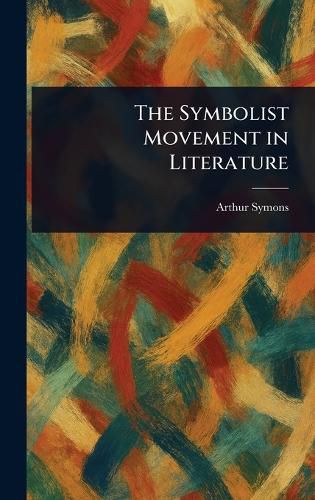Readings Newsletter
Become a Readings Member to make your shopping experience even easier.
Sign in or sign up for free!
You’re not far away from qualifying for FREE standard shipping within Australia
You’ve qualified for FREE standard shipping within Australia
The cart is loading…






This title is printed to order. This book may have been self-published. If so, we cannot guarantee the quality of the content. In the main most books will have gone through the editing process however some may not. We therefore suggest that you be aware of this before ordering this book. If in doubt check either the author or publisher’s details as we are unable to accept any returns unless they are faulty. Please contact us if you have any questions.
Arthur Symons's "The Symbolist Movement in Literature" remains a cornerstone text for understanding this pivotal period in French literature and art. A vital work of literary criticism, this book explores the core tenets of Symbolism, examining its influence on poetry and artistic expression.
Symons delves into the essence of Symbolism as a reaction against realism and naturalism, illuminating its emphasis on suggestion, atmosphere, and the power of symbols to evoke deeper meaning. He meticulously analyzes key figures and works within the movement, providing insightful commentary on their innovative techniques and thematic concerns.
This enduring exploration of Symbolism offers readers a rich understanding of its historical context, artistic significance, and lasting legacy. Ideal for students and enthusiasts of literature, art history, and French culture, this book provides invaluable insights into one of the most influential movements in modern thought.
This work has been selected by scholars as being culturally important, and is part of the knowledge base of civilization as we know it.
This work is in the public domain in the United States of America, and possibly other nations. Within the United States, you may freely copy and distribute this work, as no entity (individual or corporate) has a copyright on the body of the work.
Scholars believe, and we concur, that this work is important enough to be preserved, reproduced, and made generally available to the public. We appreciate your support of the preservation process, and thank you for being an important part of keeping this knowledge alive and relevant.
$9.00 standard shipping within Australia
FREE standard shipping within Australia for orders over $100.00
Express & International shipping calculated at checkout
This title is printed to order. This book may have been self-published. If so, we cannot guarantee the quality of the content. In the main most books will have gone through the editing process however some may not. We therefore suggest that you be aware of this before ordering this book. If in doubt check either the author or publisher’s details as we are unable to accept any returns unless they are faulty. Please contact us if you have any questions.
Arthur Symons's "The Symbolist Movement in Literature" remains a cornerstone text for understanding this pivotal period in French literature and art. A vital work of literary criticism, this book explores the core tenets of Symbolism, examining its influence on poetry and artistic expression.
Symons delves into the essence of Symbolism as a reaction against realism and naturalism, illuminating its emphasis on suggestion, atmosphere, and the power of symbols to evoke deeper meaning. He meticulously analyzes key figures and works within the movement, providing insightful commentary on their innovative techniques and thematic concerns.
This enduring exploration of Symbolism offers readers a rich understanding of its historical context, artistic significance, and lasting legacy. Ideal for students and enthusiasts of literature, art history, and French culture, this book provides invaluable insights into one of the most influential movements in modern thought.
This work has been selected by scholars as being culturally important, and is part of the knowledge base of civilization as we know it.
This work is in the public domain in the United States of America, and possibly other nations. Within the United States, you may freely copy and distribute this work, as no entity (individual or corporate) has a copyright on the body of the work.
Scholars believe, and we concur, that this work is important enough to be preserved, reproduced, and made generally available to the public. We appreciate your support of the preservation process, and thank you for being an important part of keeping this knowledge alive and relevant.